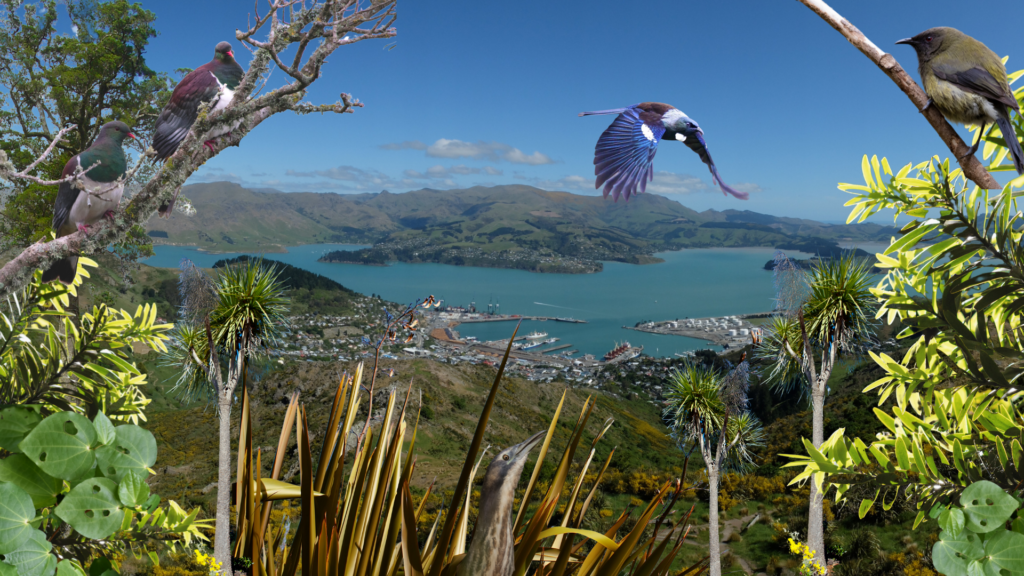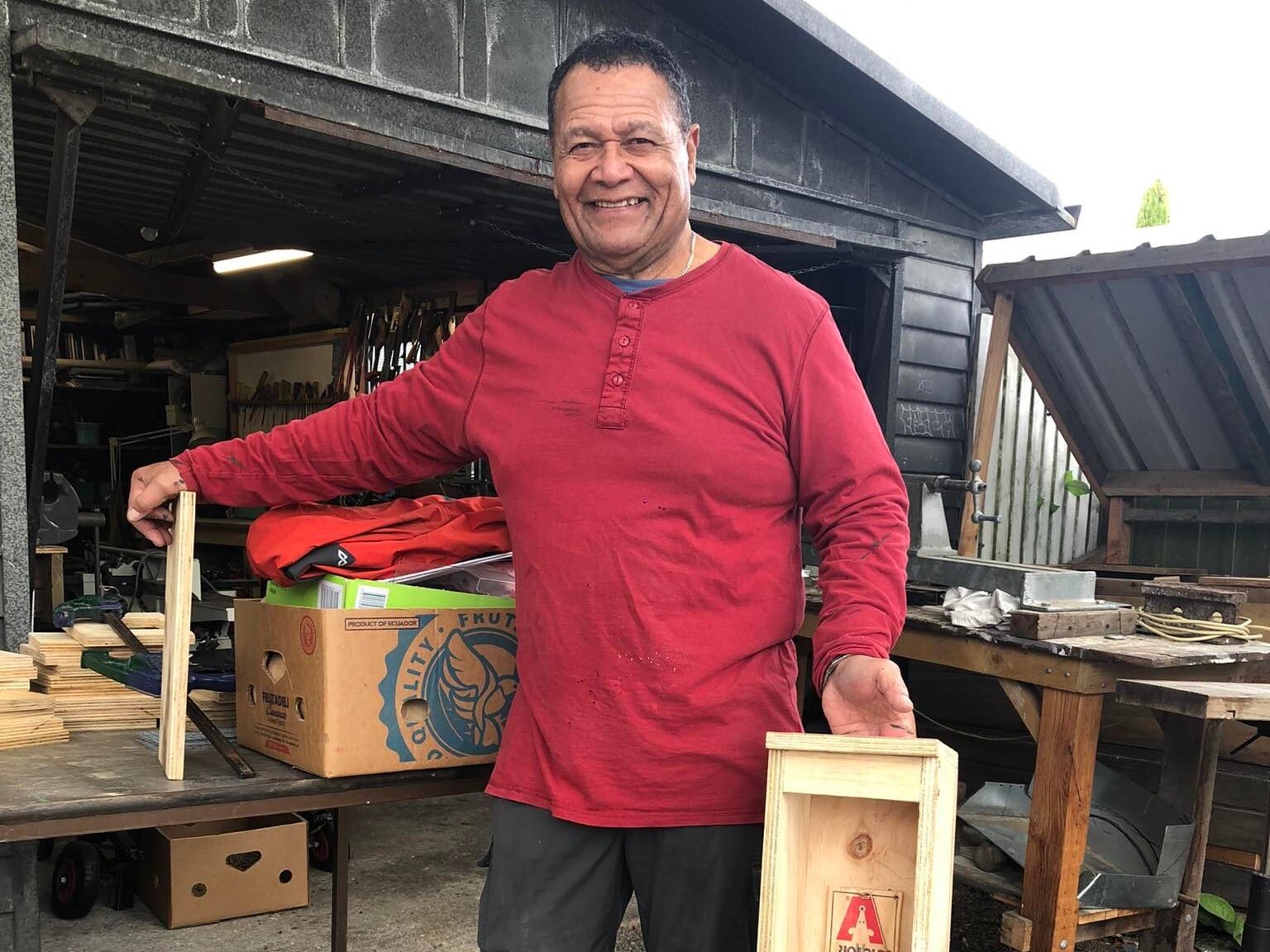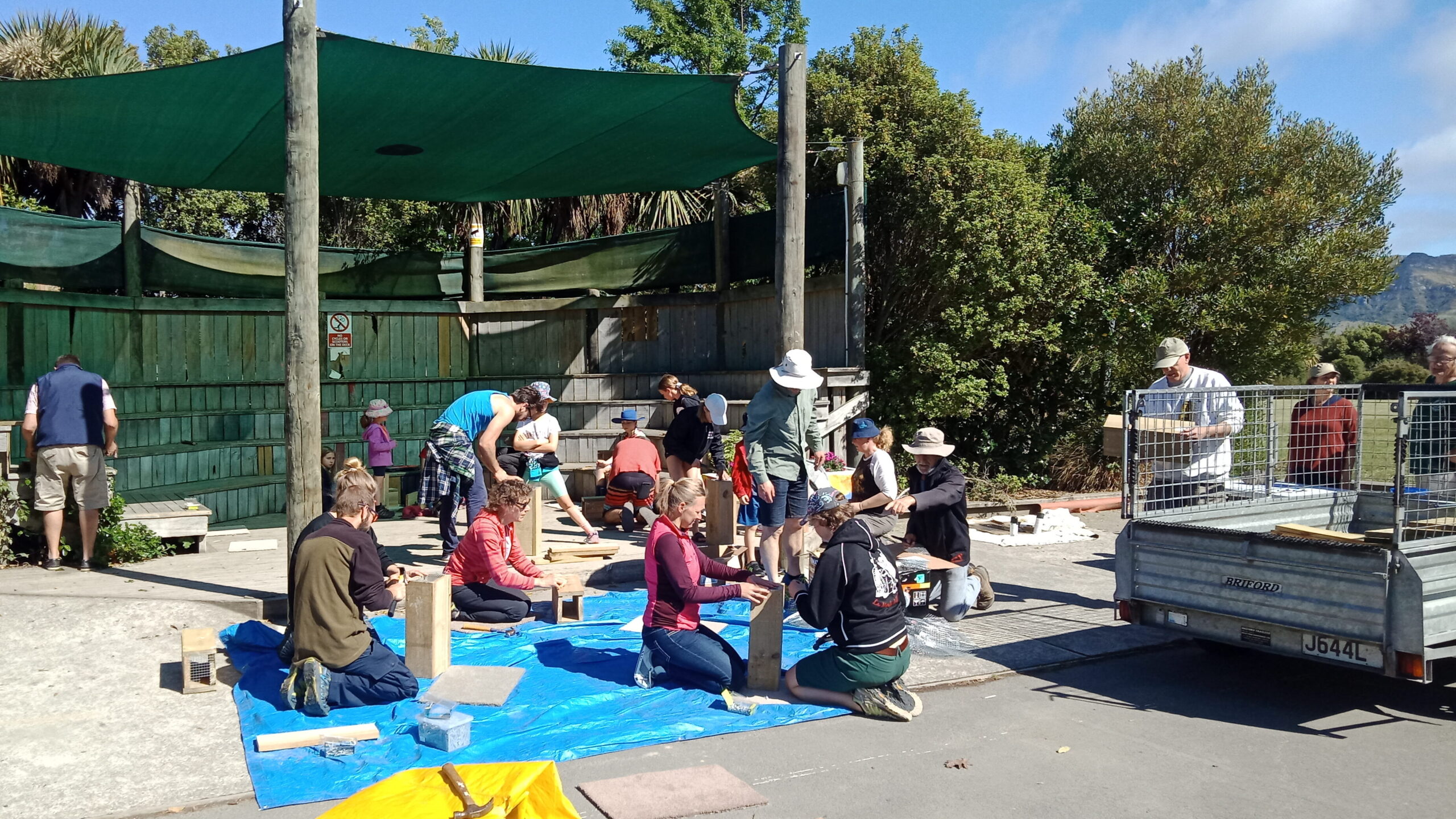Imagine if you could redesign your town or city. Would you fill it with concrete and cars or native bush and birds?

The 2011 earthquakes brought pain and rupture to Ōtautahi (Christchurch), but they also created space for new ideas. Now, more than a decade later, grassroots community groups are helping the city embrace its wild side. Native plants are sprouting in the cracks, and predator control work is encouraging birds back to the hills and suburbs.
From red to green
You’ll find Richmond Community Garden nestled on the banks of the Ōtākaro (Avon) River on the edge of the city’s Red Zone. Next to Ōtautahi’s blossoming green spine, the gardens are a hub of sustainable innovation, gardening know-how and predator control.

Since its beginning in 2015, the garden has grown from one acre to three. Then came the workshops, the fungi farm, the precious plastics recycling initiative, the community composting service, and the soon-to-be-opened café. Hungry for more, the gardens joined the Predator Free 2050 movement, becoming a trapping hub for the area and recently received funding from the Trust.
Morgane Honoré is the operations manager for the garden and runs the rat trapping programme.
“We’re managing 30 traps in the neighbourhood at the moment, but we want to get to 100 by the end of the year,” she says. Always community focussed, the garden also hosts a monthly catch-up for trapping groups in Ōtautahi.
Chairperson Hayley Guglietta has been involved in the garden from the get-go. She’s excited to see native wetlands restored along the Ōtākaro in the coming decades. She says trapping is an essential part of this process. “It’s about creating a barrier between the precious wetlands and the city,” she says. The river is a convenient pathway for rats scurrying between sea to city so Richmond’s grassroots community trapping network will help protect the city’s growing green spine. Neighbourhoods with native trees and ecologically designed catchment of water reduce the risk of flooding, and as the climate continues to warm, heat waves.
Summit for everyone
Secretary of the Summit Road Society, Marie Gray, has an infectious enthusiasm for her mahi. With four reserves and over 500 hectares to its name, the Society wants to cloak the gullies of Ngā Kohatu Whakarakaraka o Tamatea Pōkai Whenua (the Port Hills) in native bush. As tōtara spread their roots in the hills once more, serious predator control work is underway to protect the regenerating ecosystem.
In 2016, the late Jeremy Agar, Vice President of the Society, started Predator Free Port Hills, a backyard trapping programme with big dreams. Numbers are growing – they now boast close to 1500 trappers in their network. “We’re working with lots of local groups to spread out into reserves, bush, farmland, schools and more!” Marie says.
“Progress has been slower here than in other cities because of the earthquakes, but we’re running to catch up now.”
It’s no small task. The hills are a patchwork of farms, forests, crags and coastlines. The bustling port town of Lyttelton attracts its fair share of rodents, while possums and stoats roam the hills and reserves.
Marie’s on a mission to make trapping easy and fun. The Society hosts trap-building days at local schools and community venues. Conservation Volunteers NZ preps the materials so people can simply turn up and put a box together. “It’s a great activity for the kids,” Marie says.
Predator Free Port Hills works with Te Hapū o Ngāti Wheke and is part of the wider Pest Free Banks Peninsula vision. When Marie talks about Predator Free Port Hills, it’s hard not to feel the buzz. “We’re on the verge of something huge,” she says. “What’s happening around the harbour is incredibly exciting.”
Rewilding Riccarton
Jade Humphrey has always been a nature nerd. “Since I was a kid, I’ve dreamed of New Zealand being covered in native bush with birds everywhere,” she says. When she moved to Ōtautahi to study, she missed the lush lowland forests of her childhood home in Wainuiomata.

So, she decided to get stuck into predator control in her new neighbourhood Riccarton. She connected with Mike Steenson, a ranger at Pūtaringamotu Riccarton Bush (a remnant kahikatea forest just 3km from the city centre), and Predator Free Riccarton was born.
As well as the haven of Pūtaringamotu, Riccarton is a melting pot of student flats, elegant homes, busy shops and the bustling Canterbury University campus. With Predator Free NZ Trust funding, the Riccarton team started giving out subsidised traps about six months ago. With 200 traps on the ground and a large waiting list, they’re on a mission to reach their goal of over 1000 traps in their area.
Jade has even tailored the trapping programme to suit the many student flats in Riccarton. She’s written a document that tenants can take to their landlord to ensure the trapping continues when the occupants change. “Landlords can put the trap into the tenancy agreement,” she explains. “That way, when the students move out, the trap stays with the house, and future tenants can take it on.”
Jade’s also got the university on board to start trapping at the Halls of Residence. A PhD candidate herself, she says, “it’s great to have a positive project promoting biodiversity in the neighbourhood. It’s great for native species, and it’s a great way to improve the relationship between students and the other diverse members of our community.”
“It’s a lot of work,” she admits. “But it’s exciting to be part of the future vision for the city.”

